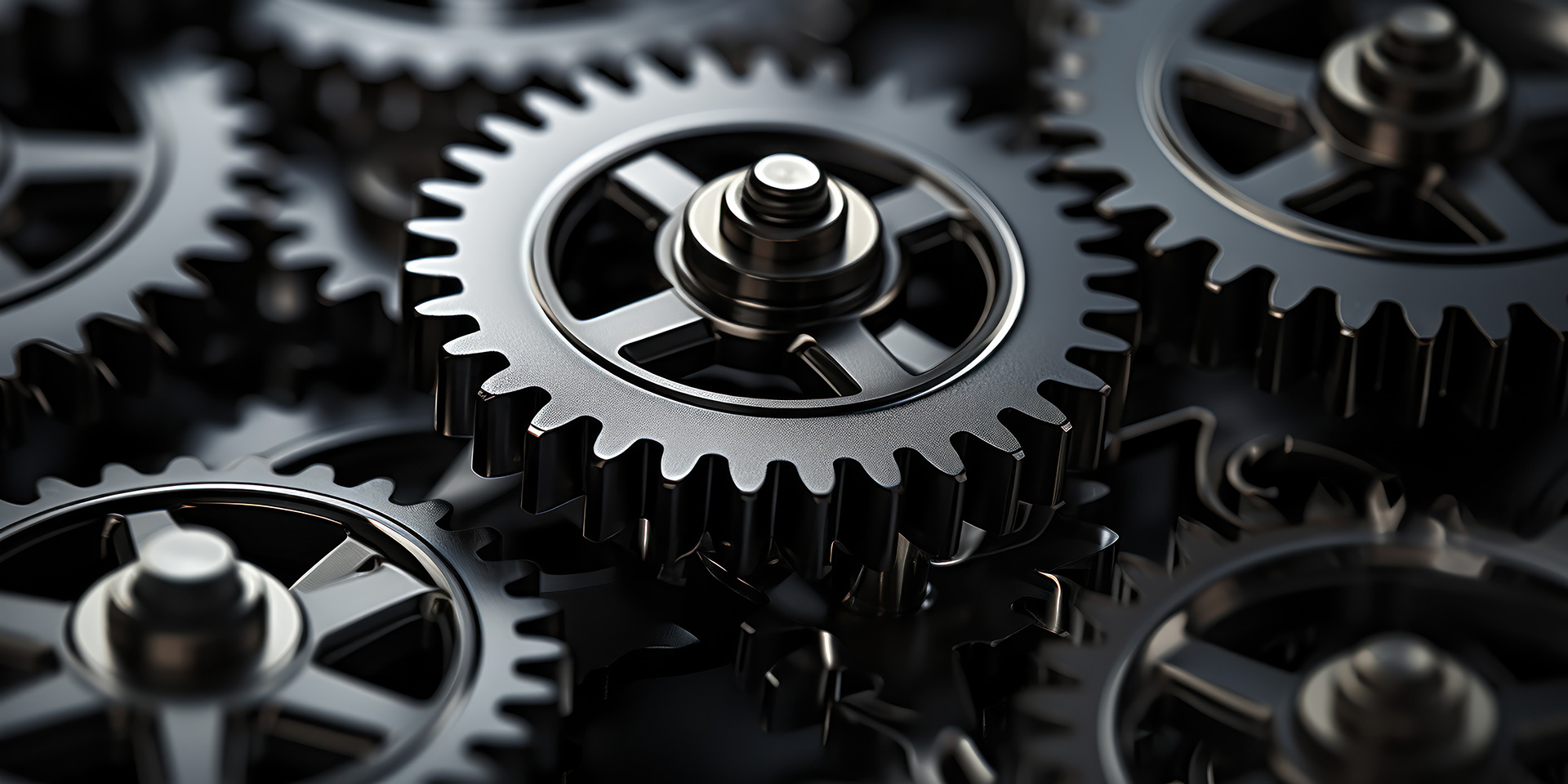
- PÁGINA DE INICIO
es_Sektörler
 es_Medical
es_Medicales_ Industry Overview In recent years, the orthopedic industry has been revolutionized by the widespread adaption of joint replacement surgery, with nearly 3 million procedures performed annually worldwide. Today, the most common form of these procedures is one where a damaged joint is replaced with a prosthetic. And while this exciting development enables new treatment options, it also presents multiple challenges related to material processing. These challenges usually stem from the following: The complex shape of the implant The restrictive geometrical and dimensional requirements Difficulty maintaining the surface integrity of the implant after insertion (needed for the implant to be durable and wear resistant) Carmex worked with several, world-leading, manufacturers of orthopedic implants, in order to develop high-quality, reliable solutions for such applications. Case Study Background Orthopedic implants are usually made from hard materials such as titanium/titanium alloys, polymers (e.g. UHMWPE – Ultra-High Molecular-Weight Polyethylene), or ceramics (such as Aluminum Oxide, and Calcium Phosphates). These materials are often notoriously hard to machine using traditional methods (i.e. Taps). The problem becomes even more difficult, when you factor in the superior surface finish required. The Test At the initiative of a well-known European medical equipment manufacturer, a comparison was done between a tool from our CR – Solid Carbide Roughers family, and several end mills by leading European manufacturers. The test was completed successfully, with the Carmex tool producing no vibrations or noise, and generating a machine load of about 5-7%.

 es_Medical
es_Medical
es_ Industry Overview In recent years, the orthopedic industry has been revolutionized by the widespread adaption of joint replacement surgery, with nearly 3 million procedures performed annually worldwide. Today, the most common form of these procedures is one where a damaged joint is replaced with a prosthetic. And while this exciting development enables new treatment options, it also presents multiple challenges related to material processing. These challenges usually stem from the following: The complex shape of the implant The restrictive geometrical and dimensional requirements Difficulty maintaining the surface integrity of the implant after insertion (needed for the implant to be durable and wear resistant) Carmex worked with several, world-leading, manufacturers of orthopedic implants, in order to develop high-quality, reliable solutions for such applications. Case Study Background Orthopedic implants are usually made from hard materials such as titanium/titanium alloys, polymers (e.g. UHMWPE – Ultra-High Molecular-Weight Polyethylene), or ceramics (such as Aluminum Oxide, and Calcium Phosphates). These materials are often notoriously hard to machine using traditional methods (i.e. Taps). The problem becomes even more difficult, when you factor in the superior surface finish required. The Test At the initiative of a well-known European medical equipment manufacturer, a comparison was done between a tool from our CR – Solid Carbide Roughers family, and several end mills by leading European manufacturers. The test was completed successfully, with the Carmex tool producing no vibrations or noise, and generating a machine load of about 5-7%.
 es_Automotive
es_Automotivees_In recent years, the global automotive industry has faced many difficulties, including a decline in demand in several key markets, and shifting from traditional car ownership to ride-sharing and rentals – made easier by emerging technologies. Additionally, as legislative authorities and environmental protection agencies struggle to keep up with the latest developments in the automotive industry, they introduce more and more legislation and standards – affecting vehicle costs.Despite of this, automotive companies worldwide are still expected to equip their vehicle with advanced equipment, and continuously improve car performance – while keeping the prices affordable.In order to be able to reduce the end prices without compromising on quality, automotive companies are constantly investigating new ways of lowering production costs. Carmex is committed to helping our partners in the automotive sector by offering them cutting tools with improved architecture (and lower cost per unit).Another important step towards potential cost savings is using the optimal cutting parameters. In order to allow our customers to determine these parameters as easily as possible, we’ve created the Tool Wizard software.The web-based software allows the user to enter the parameters of their application (including the material). Then, it selects the best available solution for the job, and provides the user with easy to understand recommendations (including recommended tools, speeds, feed rates, number of passes, and other cutting parameters). If needed, it can even generate the final G-Code program for a wide variety of CNC controls.

 es_Automotive
es_Automotive
es_In recent years, the global automotive industry has faced many difficulties, including a decline in demand in several key markets, and shifting from traditional car ownership to ride-sharing and rentals – made easier by emerging technologies. Additionally, as legislative authorities and environmental protection agencies struggle to keep up with the latest developments in the automotive industry, they introduce more and more legislation and standards – affecting vehicle costs.Despite of this, automotive companies worldwide are still expected to equip their vehicle with advanced equipment, and continuously improve car performance – while keeping the prices affordable.In order to be able to reduce the end prices without compromising on quality, automotive companies are constantly investigating new ways of lowering production costs. Carmex is committed to helping our partners in the automotive sector by offering them cutting tools with improved architecture (and lower cost per unit).Another important step towards potential cost savings is using the optimal cutting parameters. In order to allow our customers to determine these parameters as easily as possible, we’ve created the Tool Wizard software.The web-based software allows the user to enter the parameters of their application (including the material). Then, it selects the best available solution for the job, and provides the user with easy to understand recommendations (including recommended tools, speeds, feed rates, number of passes, and other cutting parameters). If needed, it can even generate the final G-Code program for a wide variety of CNC controls.
 es_Aerospace
es_Aerospacees_Currently, the worldwide commercial aviation industry is valued at nearly US $5 trillion. This sector is expected to grow at an unprecedented rate in the coming years. This growth is expected be driven by trends like urbanization, and global liberalization of air travel regulations. In parallel, key industry players have committed to ambitious targets related to fuel efficiency and reduced aircraft weight. Additionally, there are ongoing developments that aim to reduce carbon emissions, and lower noise levels.These demands have made weight savings a key requirement in the aerospace sector. One of the solutions that the industry has come up with is to switch to lightweight composite materials (e.g. carbon fiber reinforced plastic, aka CFRP), and so-called “sandwich” parts (constructed by applying layers of composite materials to metallic components). CFRP is being increasingly used in the aerospace industry in order to manufacture structural parts. In fact, in new-generation jetliners – like the Airbus A350 and Boeing 787, nearly the entire outer shell of the aircraft is made out of this material. While these developments may present new opportunities, they come with many challenges as far as wear resistance and tool geometry are concerned – a problem made worse by the abrasiveness of materials like CFRP.Carmex has collaborated for many years with companies in the aerospace sector. Today, we are known as a reliable, long-term partner that can be depended on for all aerospace-related applications, including those with diffucult-to-machine materials like CFRP. We are committed to delivering perfect-quality results on time, not only for the sake of our customers – but for the safety of the public as well.

 es_Aerospace
es_Aerospace
es_Currently, the worldwide commercial aviation industry is valued at nearly US $5 trillion. This sector is expected to grow at an unprecedented rate in the coming years. This growth is expected be driven by trends like urbanization, and global liberalization of air travel regulations. In parallel, key industry players have committed to ambitious targets related to fuel efficiency and reduced aircraft weight. Additionally, there are ongoing developments that aim to reduce carbon emissions, and lower noise levels.These demands have made weight savings a key requirement in the aerospace sector. One of the solutions that the industry has come up with is to switch to lightweight composite materials (e.g. carbon fiber reinforced plastic, aka CFRP), and so-called “sandwich” parts (constructed by applying layers of composite materials to metallic components). CFRP is being increasingly used in the aerospace industry in order to manufacture structural parts. In fact, in new-generation jetliners – like the Airbus A350 and Boeing 787, nearly the entire outer shell of the aircraft is made out of this material. While these developments may present new opportunities, they come with many challenges as far as wear resistance and tool geometry are concerned – a problem made worse by the abrasiveness of materials like CFRP.Carmex has collaborated for many years with companies in the aerospace sector. Today, we are known as a reliable, long-term partner that can be depended on for all aerospace-related applications, including those with diffucult-to-machine materials like CFRP. We are committed to delivering perfect-quality results on time, not only for the sake of our customers – but for the safety of the public as well.
 es_Petro Kimya
es_Petro Kimyaes_

 es_Petro Kimya
es_Petro Kimya
es_
 es_Savunma Sanayi
es_Savunma Sanayies_Kesici uçlar, savunma sanayiinde kritik bir rol oynamaktadır. Yüksek hassasiyet ve dayanıklılık gerektiren bu sektörde, savunma araçlarının ve ekipmanlarının üretiminde kullanılan malzemelerin işlenmesi büyük önem taşır. Kesici uçlarımız, askeri araç ve ekipmanların parçalarının kesim, delme ve frezeleme işlemlerinde üstün performans sunar. Özellikle zırh malzemeleri, titanyum ve diğer sert metallerin işlenmesinde yüksek verimlilik ve hassasiyet sağlar. Savunma sanayiinin artan kalite ve güvenlik standartlarına uygun olarak üretilen kesici uçlarımız, güvenilirlik ve uzun ömürlülük açısından da ön plana çıkmaktadır. Bu sayede, savunma projelerinde maliyetleri düşürürken, üretim süreçlerini hızlandırır ve yüksek kaliteli sonuçlar elde edilmesini sağlar.

 es_Savunma Sanayi
es_Savunma Sanayi
es_Kesici uçlar, savunma sanayiinde kritik bir rol oynamaktadır. Yüksek hassasiyet ve dayanıklılık gerektiren bu sektörde, savunma araçlarının ve ekipmanlarının üretiminde kullanılan malzemelerin işlenmesi büyük önem taşır. Kesici uçlarımız, askeri araç ve ekipmanların parçalarının kesim, delme ve frezeleme işlemlerinde üstün performans sunar. Özellikle zırh malzemeleri, titanyum ve diğer sert metallerin işlenmesinde yüksek verimlilik ve hassasiyet sağlar. Savunma sanayiinin artan kalite ve güvenlik standartlarına uygun olarak üretilen kesici uçlarımız, güvenilirlik ve uzun ömürlülük açısından da ön plana çıkmaktadır. Bu sayede, savunma projelerinde maliyetleri düşürürken, üretim süreçlerini hızlandırır ve yüksek kaliteli sonuçlar elde edilmesini sağlar.
 es_Dişli
es_Dişlies_

 es_Dişli
es_Dişli
es_




